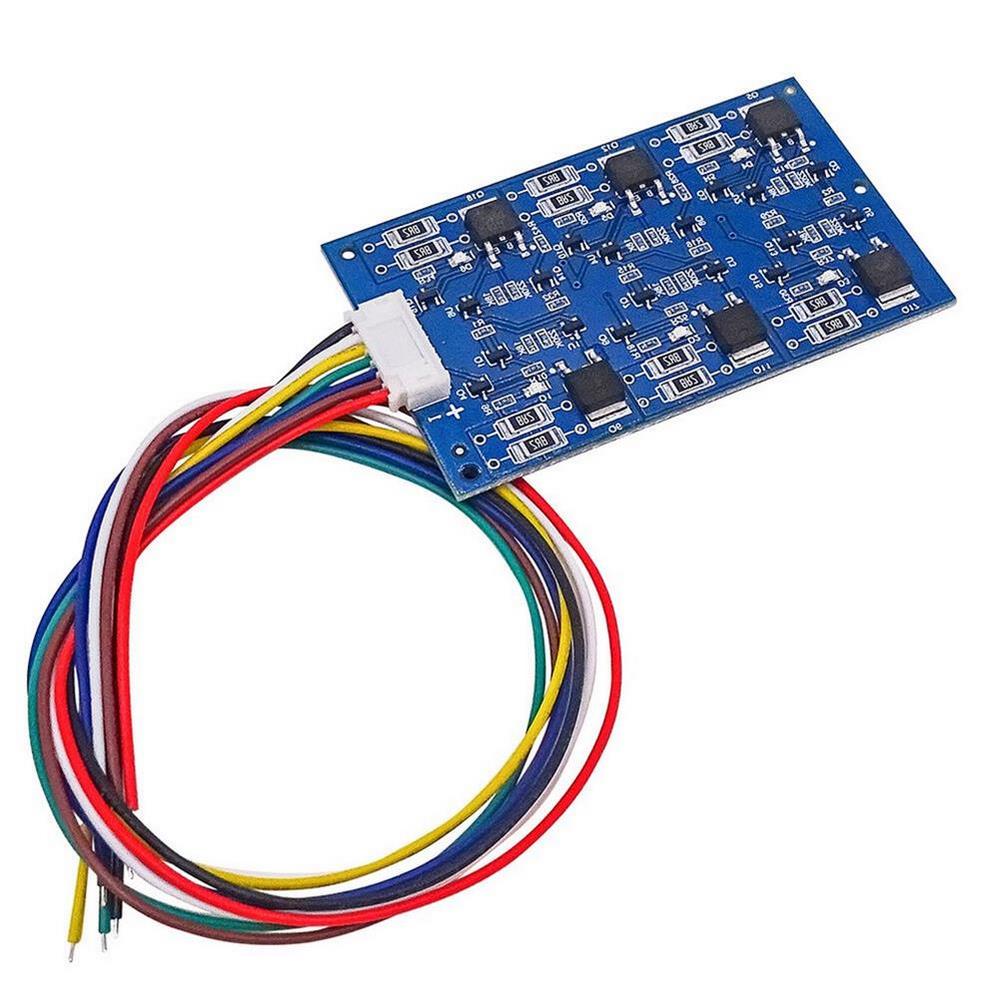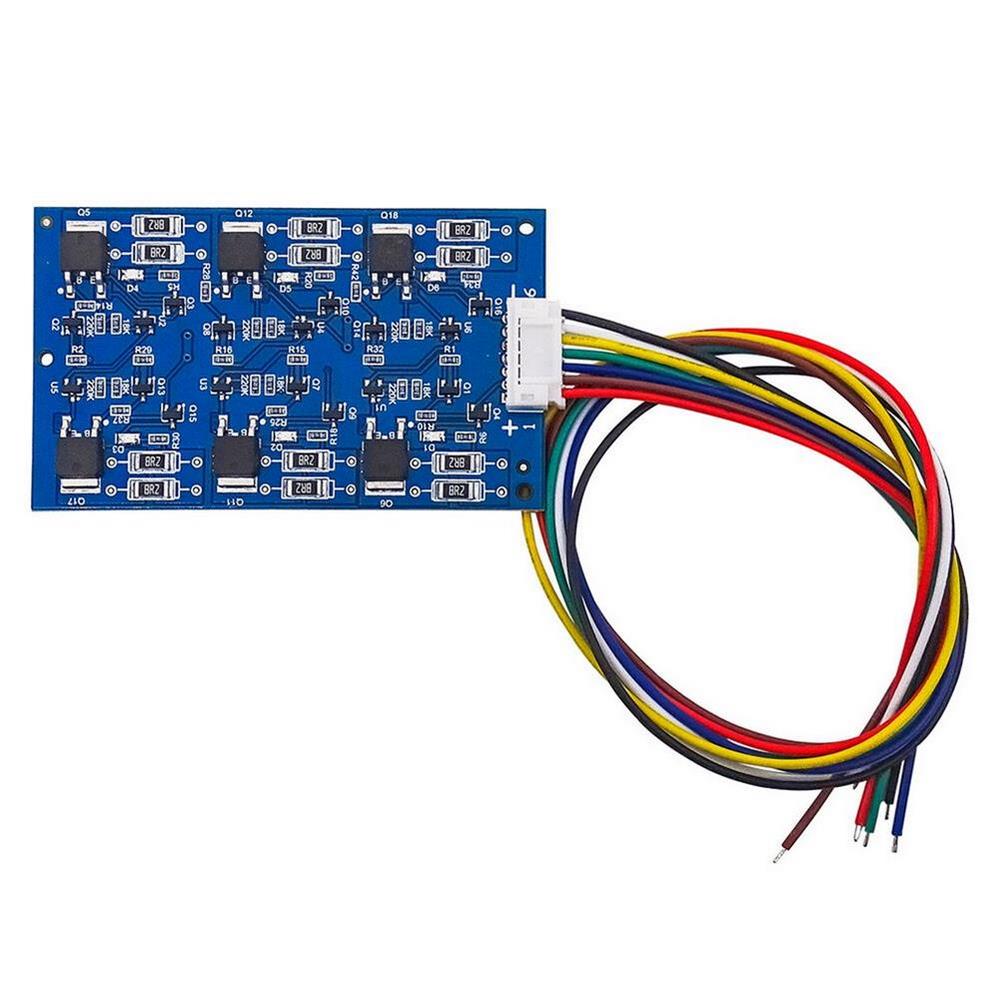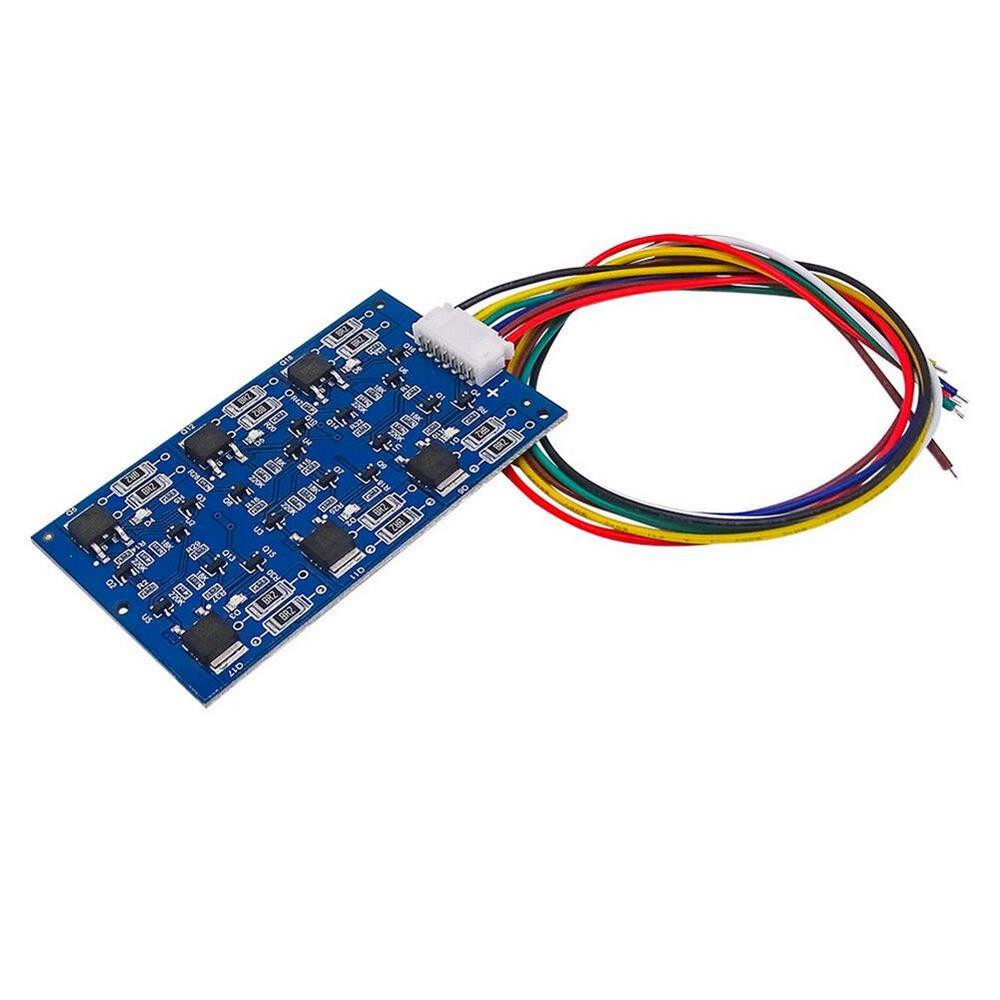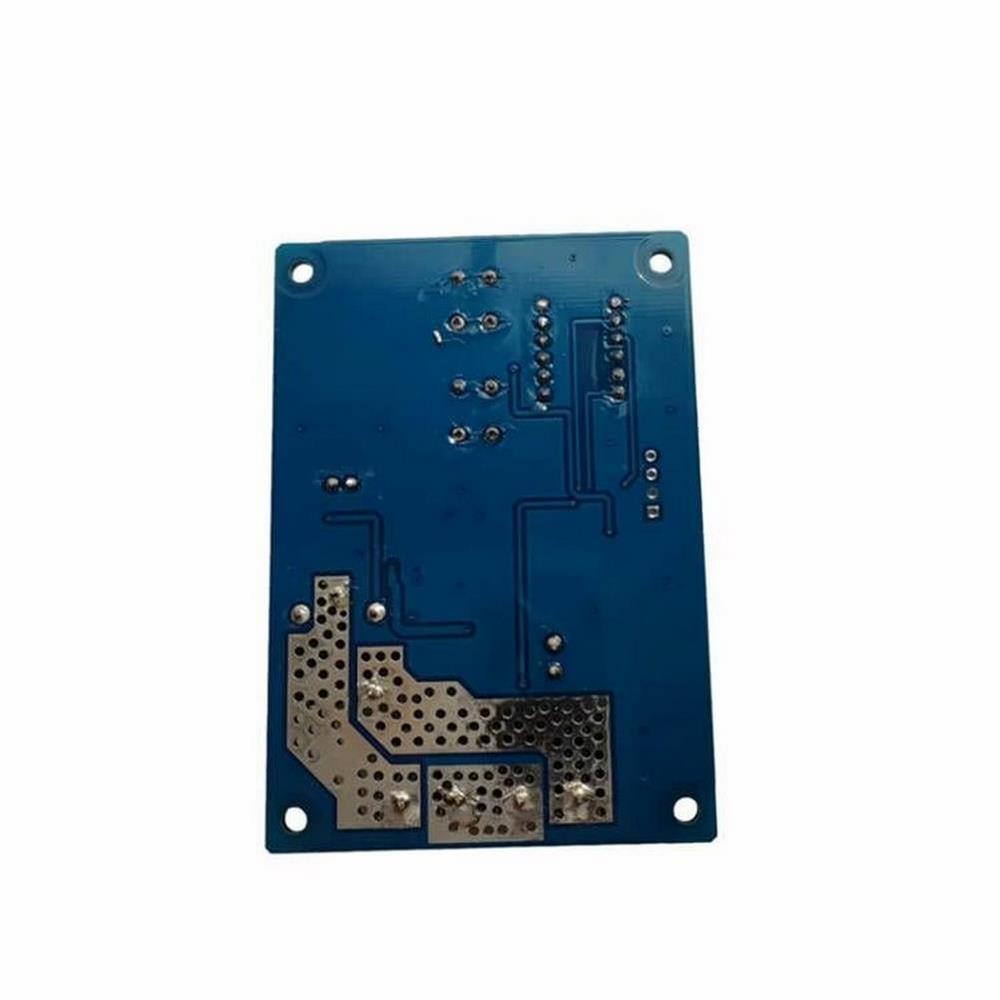2.7V/16V 6S Balance Board Balance Circuit Lithium Titanate Battery Super Farad Capacitor Protection Board
Description:
This protection board can protect the farad capacitor and lithium titanate battery.
It is suitable for 2.7V voltage farad capacitor and lithium titanate battery.
The protection voltage can be finely adjusted in the range of 2.5V-3V by replacing the voltage divider resistor (higher equalization voltage is needed). Replace the high resistance power resistor)
The working principle of the circuit is that when a single cell/capacitor voltage is higher than the equalization voltage, the circuit internally discharges the battery/capacitor by turning on the triode, and the excess power is dissipated by the power resistor. Circuit equalization voltage accuracy is plus or minus 1%.
Preparation before assembly:
??Farad capacitor protection board??:
Before wiring, please empty all the stored charge in the capacitor, and short-circuit the positive and negative electrodes of each capacitor with a wire for more than three minutes (the larger the capacity, the longer the short-circuit time can be used to discharge the electricity).
??Lithium titanate protective plate??:
Before assembling, please ensure that the consistency of the battery is good, and the internal resistance/capacity of each battery should not be too different. The best test is to choose a battery with good consistency to form a battery pack, so that the battery pack can achieve the longest life.
Charge:
??Lithium titanate battery??:
Charge and discharge the same port, without the protection board. The charger should use a lithium battery charger (adjustable regulated power supply can also be used). Generally, the highest voltage will be marked on the charger. It is forbidden to use a lead battery charger to charge lithium batteries.
Charging voltage:The number of battery strings is N, the cell voltage is limited to 2.7V, and the maximum charging voltage should not exceed N*2.7V. For example, 5 strings of battery packs, the maximum voltage should not exceed 5*2.7=13.5V. If the voltage of the charger is too high, all the indicator lights will light up at the end of the charge, and the charging can be stopped at this time. If this state is maintained for a long time, it is not good for the protection board.
Charging current:It is determined by the performance of the charger and battery, and has nothing to do with the protection board used.
The first charge:Before charging, please ensure that the voltage difference of each battery is within 0.05V, and the battery higher than that should be discharged to the same level. Please pay attention to the status of the protection board at any time when charging for the first time! When the voltage of a single battery reaches about 2.7V, the overvoltage indicator lights up. At this time, special attention should be paid to the voltage of the corresponding battery.
??Farah capacitance??:
Before use, please charge the capacitor bank to a voltage similar to the working state. You can use a high-power resistor to limit the current to prevent the power supply from being damaged or overcurrent protection caused by excessive current. If there is an indicator light on when the capacitor bank is working normally, please remove the capacitor bank to check the capacity of the capacitor. Please refer to the advanced section for the Farad capacitor capacity test method.
Precautions:
1. All the protection boards are tested before delivery, but even the tested ones have a very low possibility of failure. If there are conditions, please test them again before installation. The test of the adjustable regulated power supply (which can be replaced by two dry batteries) is as follows:adjust the current value to about 0.5A, adjust the voltage to about 3.0V, and connect the positive and negative electrodes of the assembled batteries to each line in sequnce On (don’t worry about reverse connection, there is no current in reverse connection), the LED will light up red.
Possible failures of the protection board:1) A certain circuit does not turn on when the protection voltage is reached, and the power resistor does not heat up. 2) A certain channel starts to discharge when the protection voltage is not reached, and it may start to discharge as soon as the battery is connected. In the above two situations, please contact customer service.
2. When the protection board is protected, it will generate a lot of heat. This is the heat generated by the discharge of the battery that exceeds the protection voltage through the transistor and the resistor. If the heat cannot be dissipated in time, it will damage the protection board or the battery. Therefore, the protection board should have enough heat. space to dissipate heat, do not wrap the protective plate with other materials.
3. Under normal circumstances, the voltage of a few batteries will exceed the protection voltage in the final stage of charging, so that the heat will be controlled within a certain range. When the indicator light is on, the cell voltage is 2.7V. When more than half of the indicator lights are on, please stop charging, check the voltage of each battery and charger, please check the battery capacity (provided that the initial power of each battery should be controlled at the same level before assembly), you can try a few higher voltages Charge the battery after a part of the battery power is discharged, and check the maximum charging voltage of the charger at the same time (the last stage of the lithium battery charger is constant voltage charging, and the voltage measured at this time can be regarded as the maximum charging voltage of the charger).
4. If possible, check the battery voltage again after running the battery pack with load for several cycles to ensure that the battery voltage is not much different.
Package include:
Battery protection board??1
Cable??1







Additional information
| Weight | 0.023 kg |
|---|

















Reviews
There are no reviews yet.